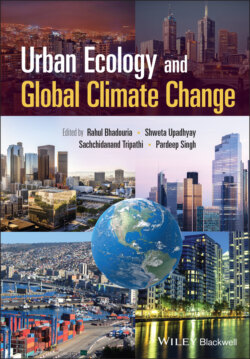Читать книгу Urban Ecology and Global Climate Change - Группа авторов - Страница 44
2.4 Urbanisation as a Factor to Increase Cardiometabolic and Cardiovascular Disorders 2.4.1 The Driving Development of Urbanisation and Its Implications on Cardiovascular Syndrome in the Twenty‐First Century
ОглавлениеThe birth of the metropolis has been a recent development in the latest generations. Backwoods regions have previously been urbanised; along with that many people have migrated to urban areas. In recent studies, it has been observed that the various risks of cardiometabolic and CVD begin in premature conditions of pregnant mothers, or at the time of birth. The risk increases more due to many factors like lack of physical activity, unhealthy diet, consumption of alcohol and tobacco, smoking, etc. Many of these exposures have increased due to the negative impacts of urbanisation. Although urbanisation has brought major improvements in the economy and many lifestyle opportunities like working variations, diversity to education, fast internet, and social world development and political mobilisation, but this poses a great obstruction towards maintaining a healthy lifestyle and behaviour (Figure 2.3). Taking into consideration man‐made landscapes, often in certain cases, industrialisation has occurred way too fast, leading to many defects in the construction of living places. As a result, a person has started to live in insubstantial conditions starting from cardboard boxes to pavements, under bridges, near streets, slums, sidewalks tents, etc. Individuals living in such conditions have low nutritious diets and less opportunities for medication and other daily exercises. People living in extremely well‐maintained houses are forced to sedentary behaviour due to lack of physical activity, less active in playing outside environment, not only that but much more addiction towards drinking and smoking. As a result, people residing in crowded places have a high risk to develop rheumatic heart disease (RHD), which causes damage to the heart muscle and heart valves. On the other hand, it has been said that children may suffer obesity due to maternal obesity during pregnancy; however, there is less proof to this statement (Castro et al. 2003). Individuals of low middle economic status are more open to street and cheap foods since they are easily available like open vendors as they have limited budget and less choice. Moreover, it has been noticed that people living in well‐maintained conditions are also at threat of developing cardiometabolic syndrome often seen due to much addiction in the social world (Münzel et al. 2017a). In addition to that smoking rate, consumption of drugs, alcohol among youth has increased rapidly which is ultimately leading them to stress, depression, anxiety, obesity, and early‐stage diabetes.
Figure 2.3 Complex urban planning and its impact on cardiometabolic syndrome.
